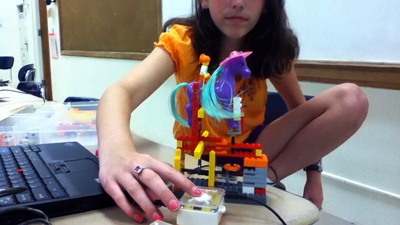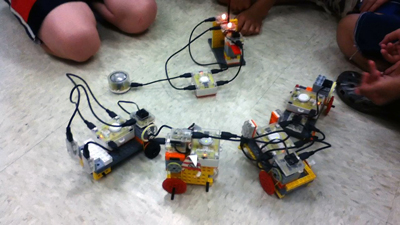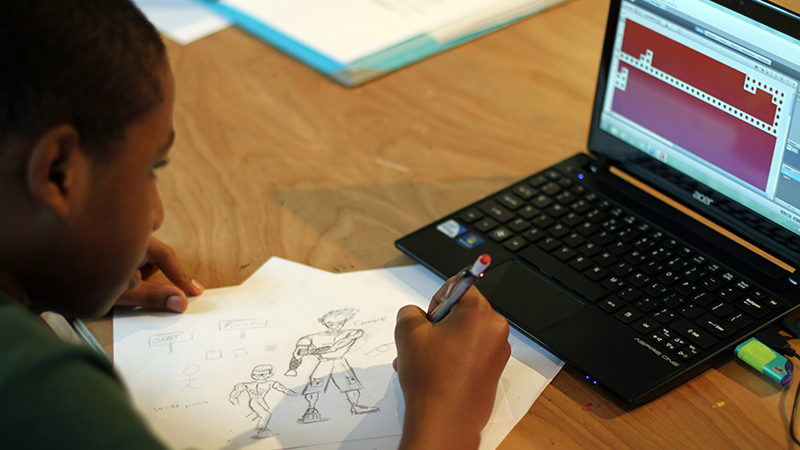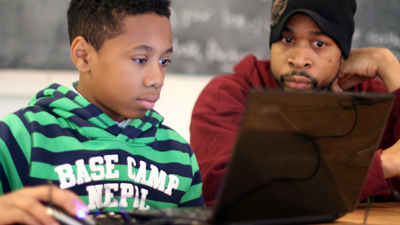

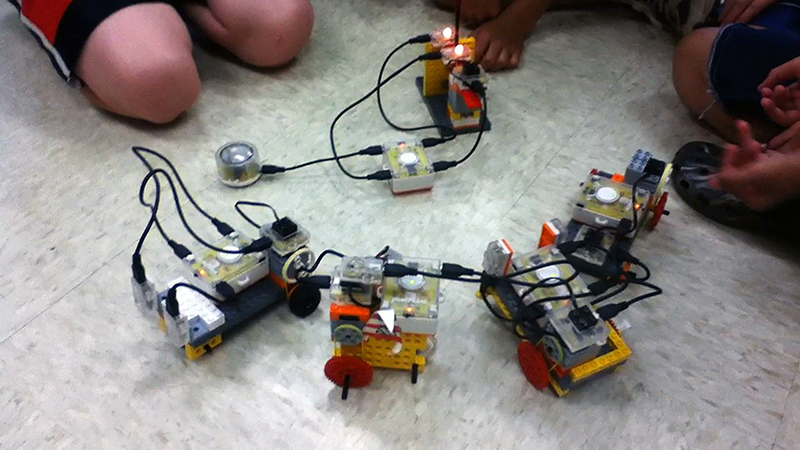
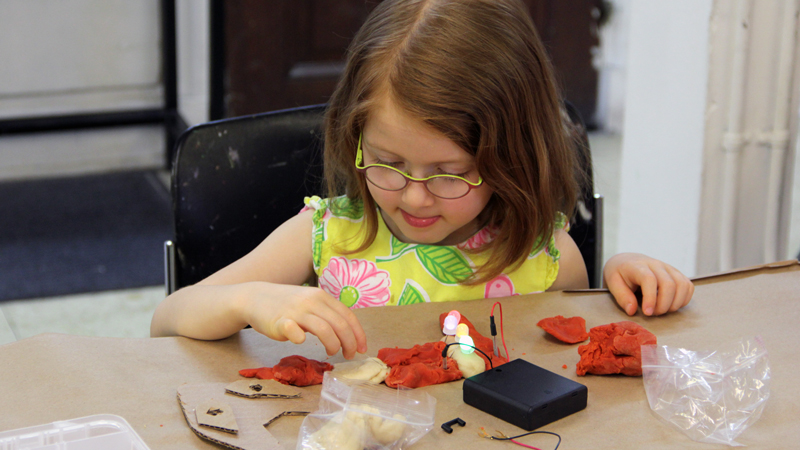
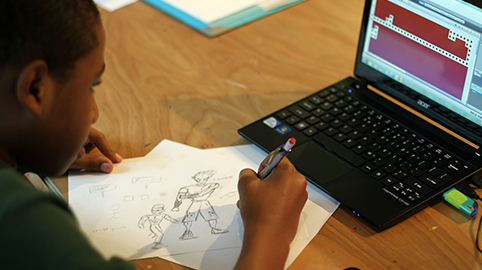
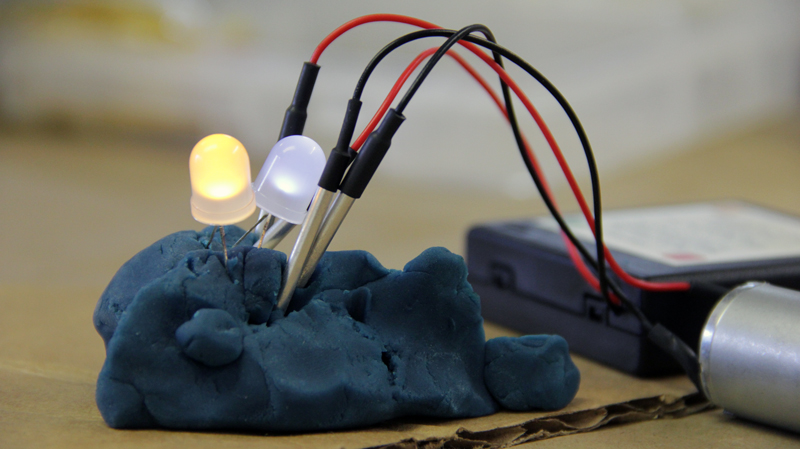
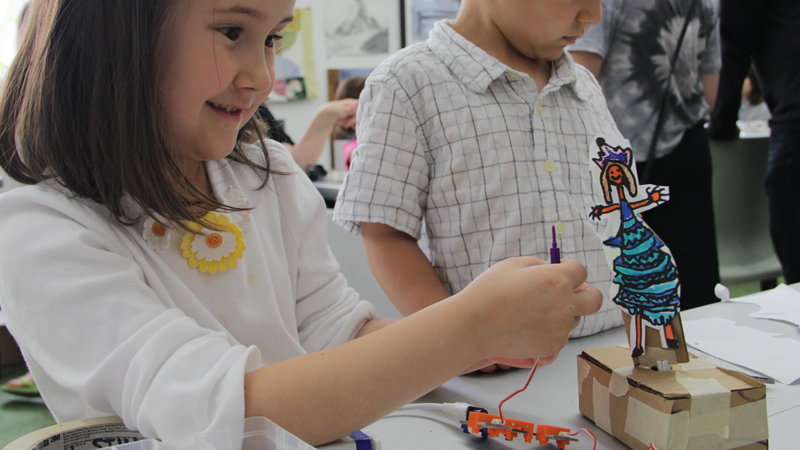
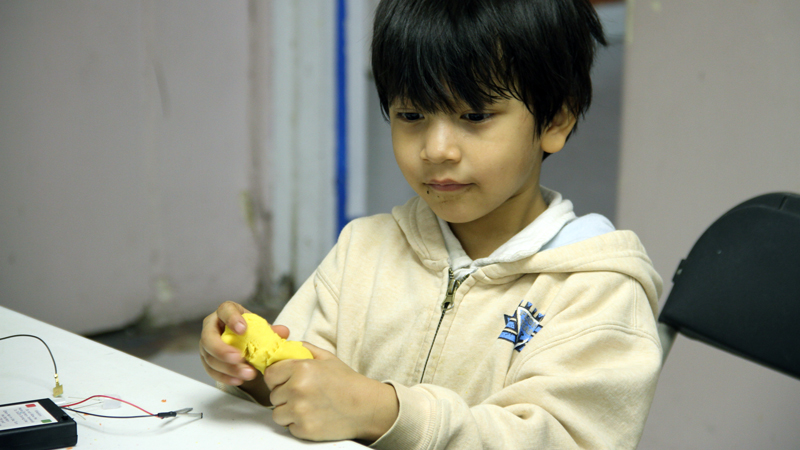

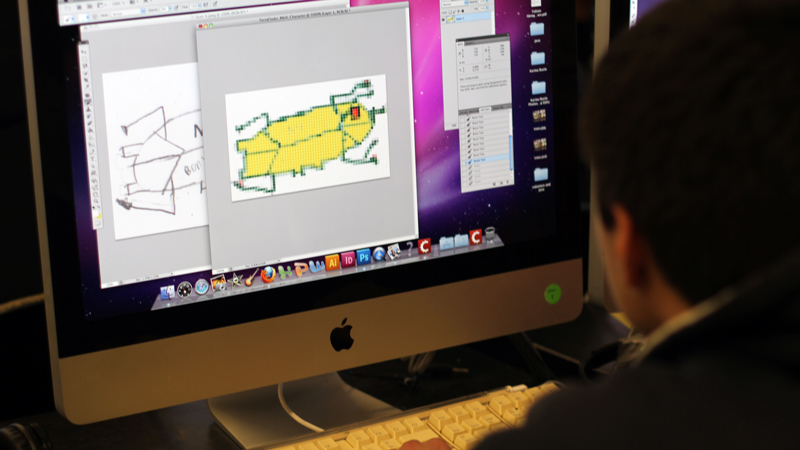

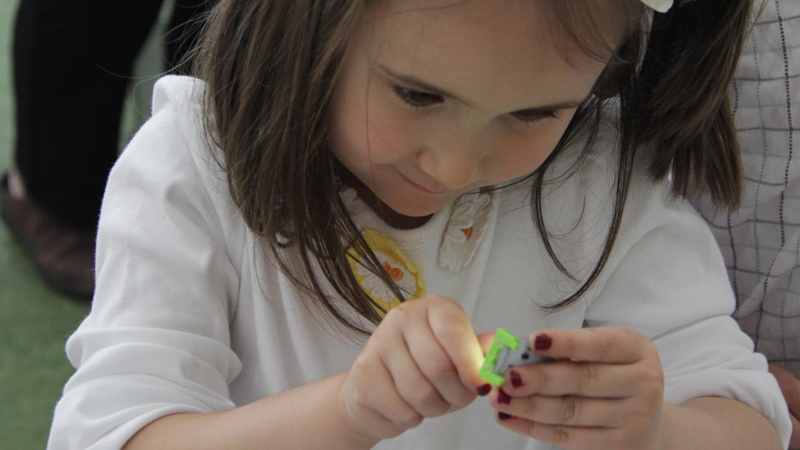
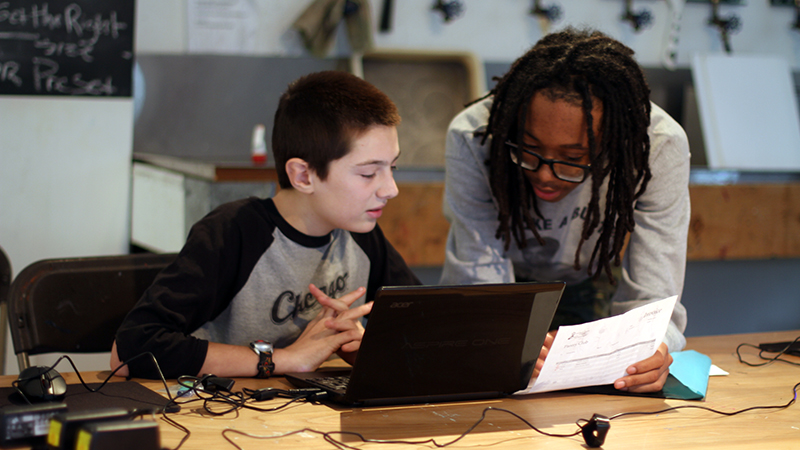
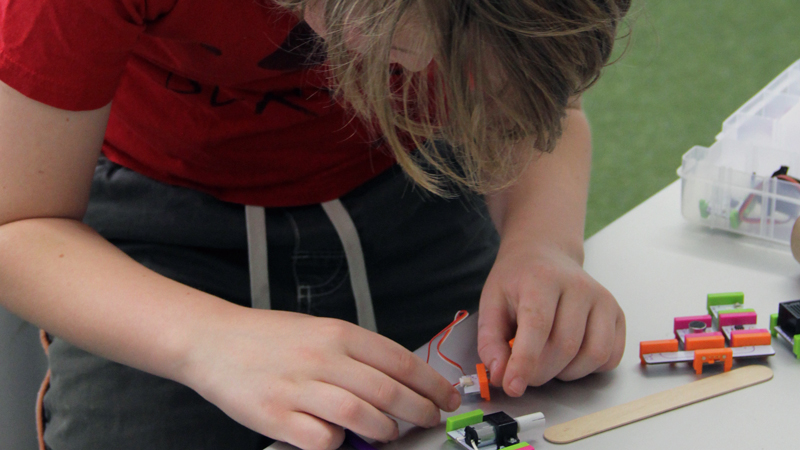
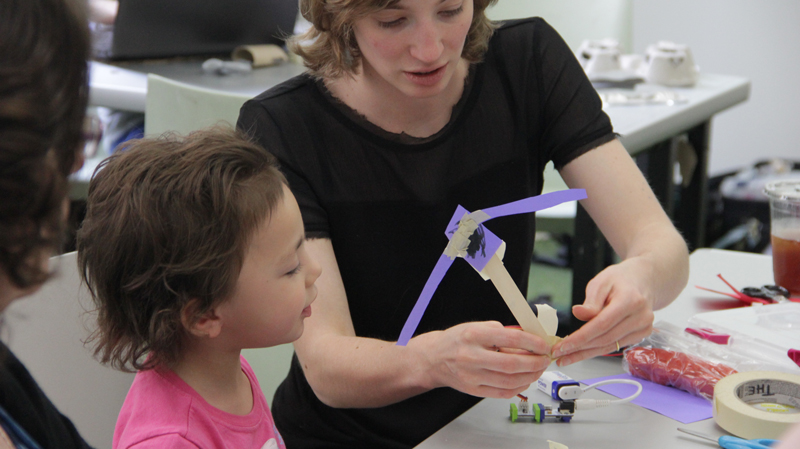
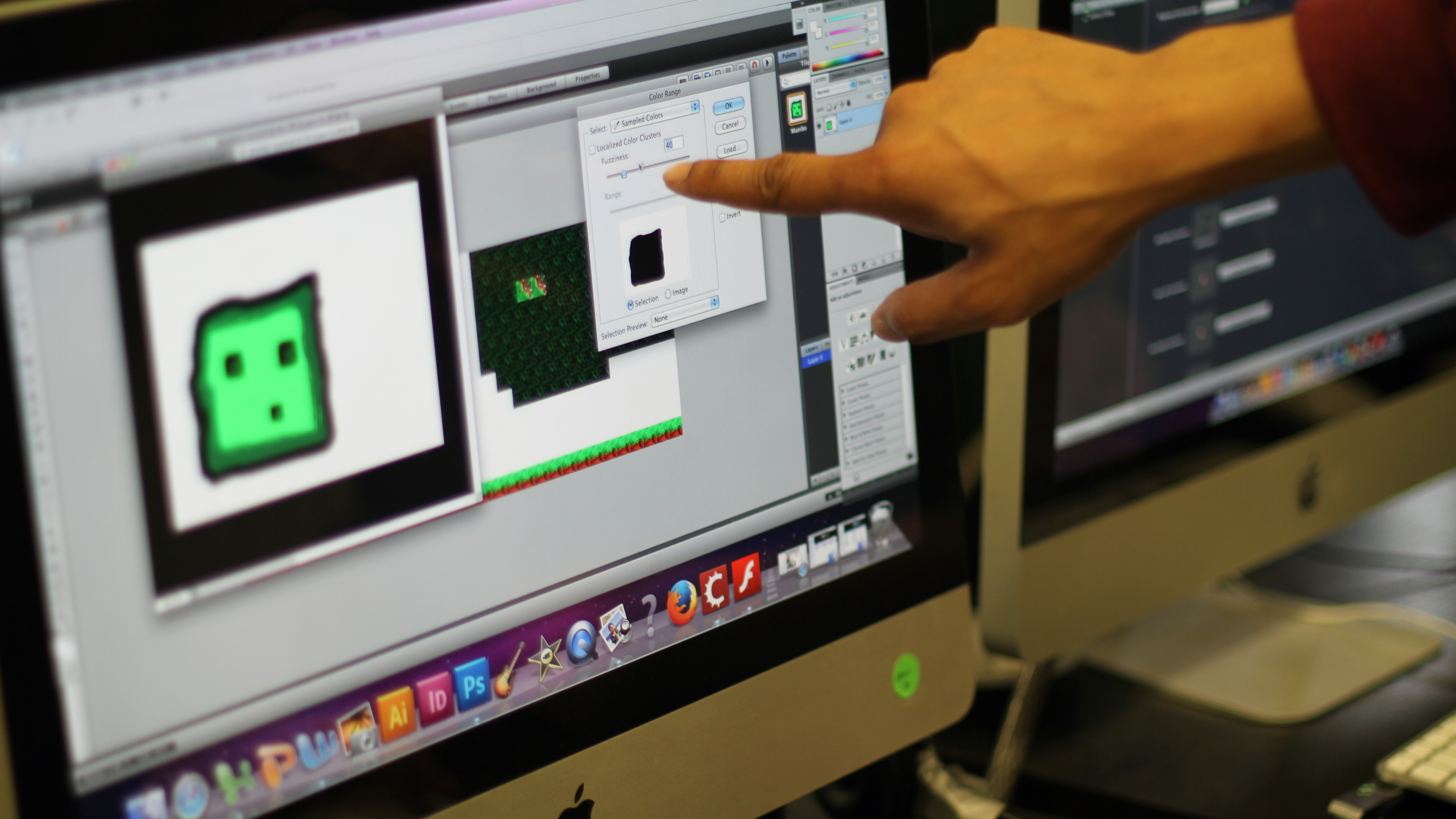
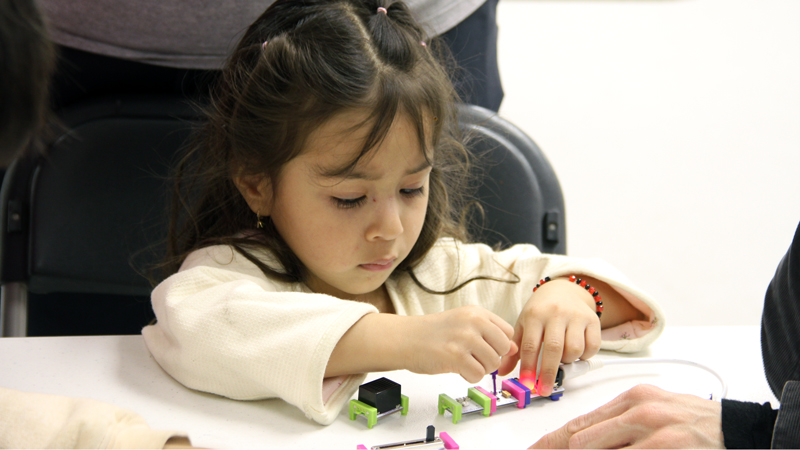
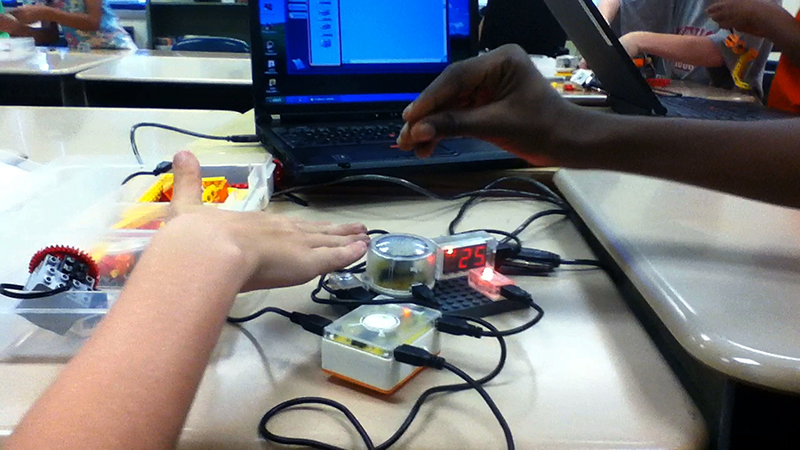


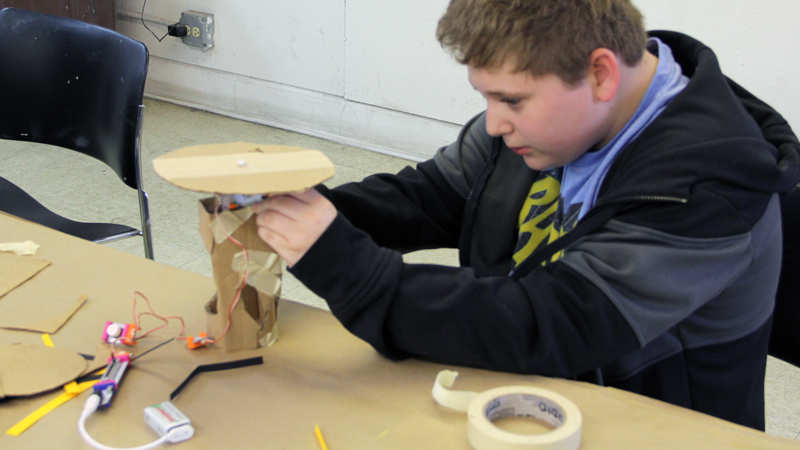
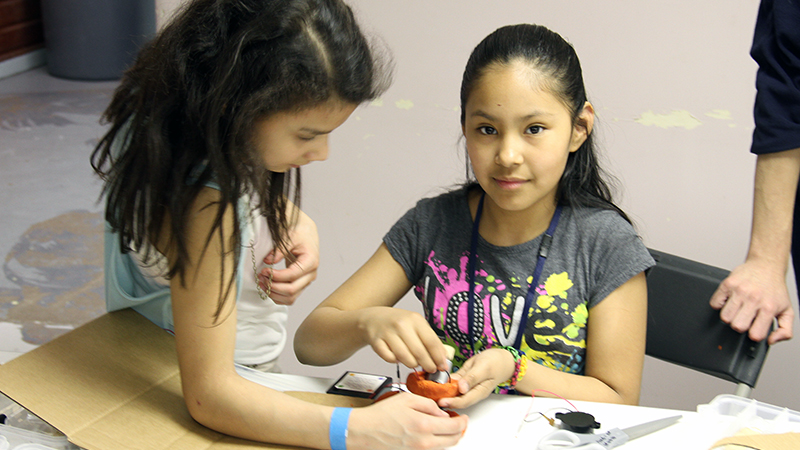
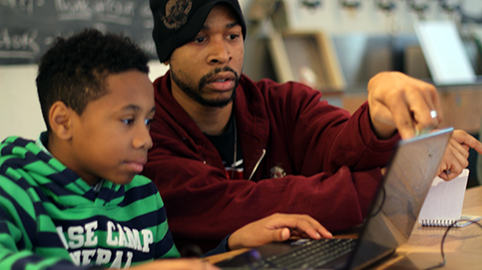
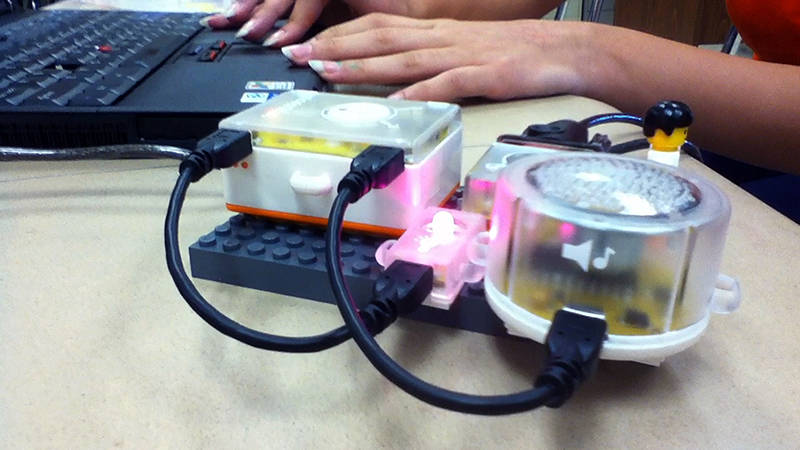

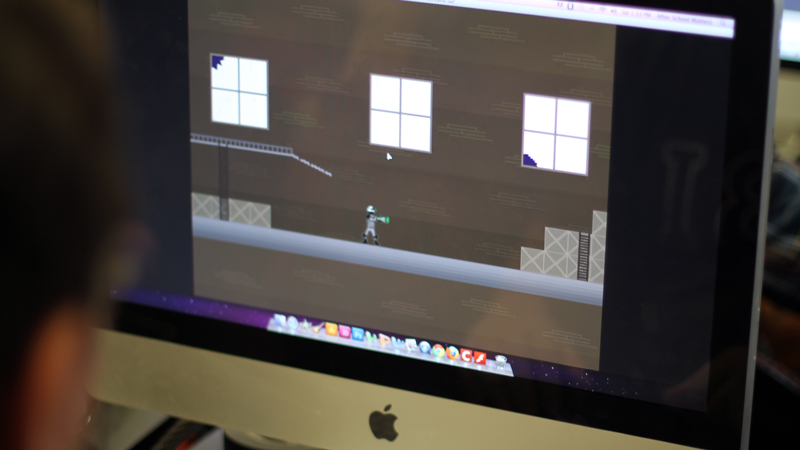
Classes for young people
Interactive Art + Tech Lab
Students in the Interactive Art + Tech Lab course explore the intersection of art and engineering through the construction of kinetic structures, sculptures and contraptions that interact, react, and communicate through light, sound, and motion. Students construct these artworks with the PicoCricket, a microcontroller that connects with and controls an array of motors, speakers, lights, and light, touch, and sound sensors. Through the creation of their interactive artworks, students develop aesthetic and conceptual art and design fluency along with programming, structural design, and mechanical engineering skills.
Videogame Lab
In Retro 8bit Games, students create video games in the style of vintage Atari 2600 games. They learn programming and design concepts as they produce games with a retro 8-bit graphical aesthetic and simple gameplay. These games are created using Scratch, a visual programming language distributed for free by The MIT Media Lab's Lifelong Kindergarten group. Play some 8-bit games made by middle school students here.
The Intro to Video Game Development course gives students an opportunity to become game developers, creating their own 2D side-scroller prototype centered on a social justice, environmental, or personally relevant topic. Students examine and discuss commercial video games and explore their positive and negative impact. They learn how video games can be a powerful tool for telling their own stories while learning the basics of digital imaging software and the Stencyl video game engine.
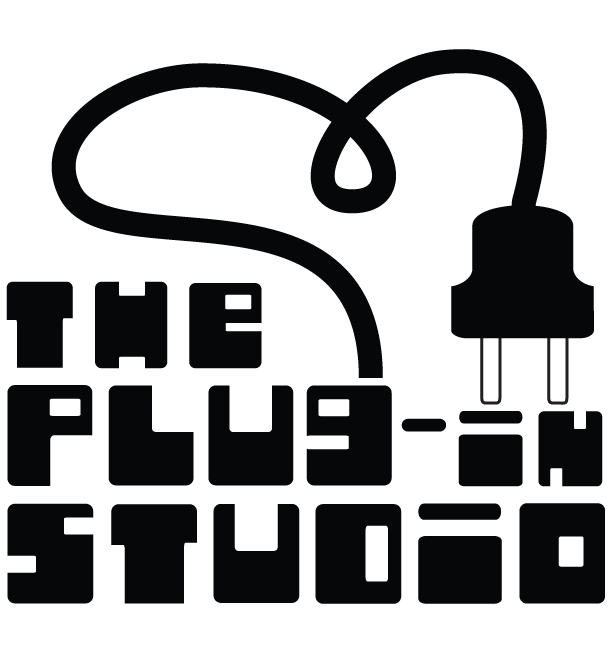
 The Street Arcade
The Street Arcade